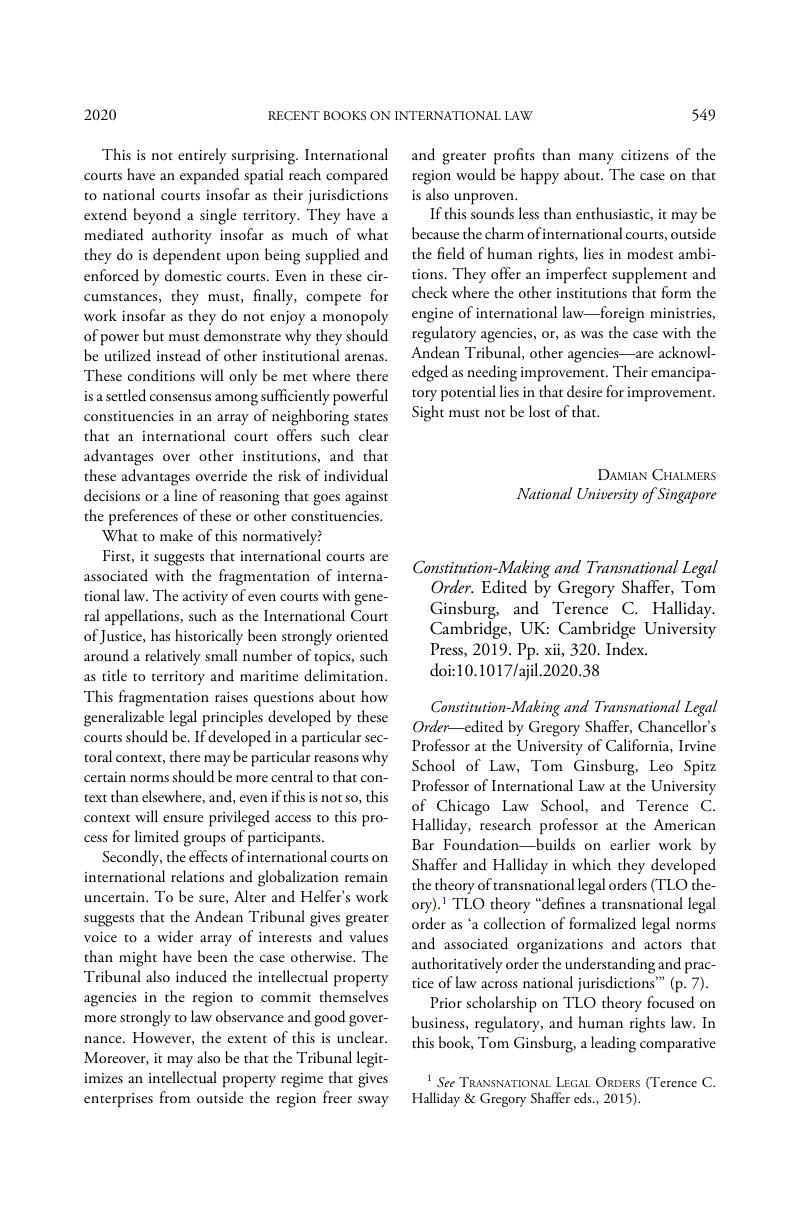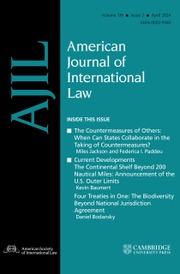No CrossRef data available.
Article contents
Constitution-Making and Transnational Legal Order. Edited by Gregory Shaffer, Tom Ginsburg, and Terence C. Halliday. Cambridge, UK: Cambridge University Press, 2019. Pp. xii, 320. Index.
Published online by Cambridge University Press: 17 July 2020
Abstract

- Type
- Book Reviews
- Information
- Copyright
- Copyright © 2020 by The American Society of International Law
References
1 See Transnational Legal Orders (Terence C. Halliday & Gregory Shaffer eds., 2015).
2 Craig, at 175, quoting Halliday & Shaffer, supra note 1, at 38.
3 Hathaway, Oona A., Do Human Rights Treaties Make a Difference?, 111 Yale L.J. 1935, 1940 (2002)CrossRefGoogle Scholar.
4 See, e.g., Beth A. Simmons, Mobilizing for Human Rights: International Law in Domestic Politics (2009) (concluding that ratification of human rights treaties has the greatest positive impact in countries that are neither stable democracies nor stable autocracies).
5 See generally The Role of Domestic Courts in Treaty Enforcement: A Comparative Study (David Sloss ed., 2009).
6 See generally National Treaty Law and Practice (Duncan B. Hollis, Merritt R. Blakeslee & Benjamin Ederington eds., 2005).
7 See John Dugard, South Africa, in Sloss, supra note 5; Mónica Pinto & Nahuel Maisley, From Affirmative Avoidance to Overriding Alignment: The Engagement of Argentina's Supreme Court with International Law, in Engagement of Domestic Courts with International Law (André Nollkaemper, Antonios Tzanakopoulos & Yuval Shany eds., forthcoming 2020, on file with author).
8 In addition to Chapter Four in this volume, see Elkins, Zachary, Ginsburg, Tom & Simmons, Beth, Getting to Rights: Treaty Ratification, Constitutional Convergence, and Human Rights Practice, 54 Harv. Int'l L.J. 61 (2013)Google Scholar.


